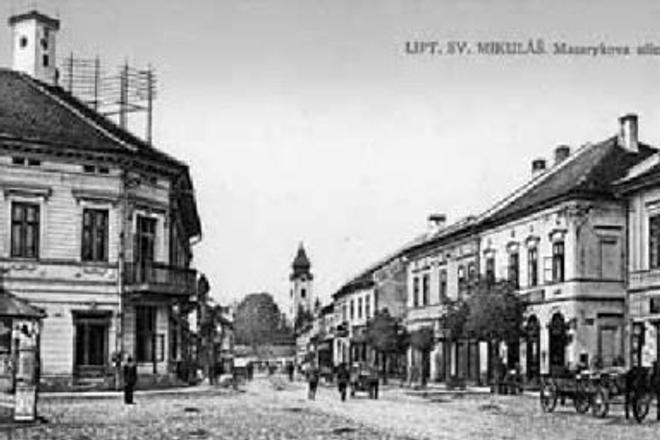THIS postcard from the 1920s shows a street that at first sight suggests it is part of a neat, wealthy town. Appearances, however, can sometimes be deceiving: in most Slovak towns, it was only the limited area of the centre that had such an urban look, while the immediate surroundings could hardly be distinguished from a village.
This was also the case for Liptovský Mikuláš, where this photograph was taken. From the 15th century it was the centre of the Liptov region and between 1677 and 1928 all regional public offices were based there. It was at the local Town Hall that Juraj Jánošík, the legendary Slovak outlaw, was tried in 1713. This man is a good example of how legends sometimes cloud reality. Though he was no more than a robber, he soon became regarded as a national hero, fighting against the Hungarian nobility. His murderous deeds have certainly only increased his popularity. Why otherwise would his compatriot, Eduard Penkala, the inventor of the fountain pen, be almost unknown even though his achievements were much greater?
The recent history of Liptovský Mikuláš is no less interesting. At the end of World War II, between February and April 1945, it became the centre of the fighting in Slovakia, and played the second most important role in the liberation of Czechoslovakia.

